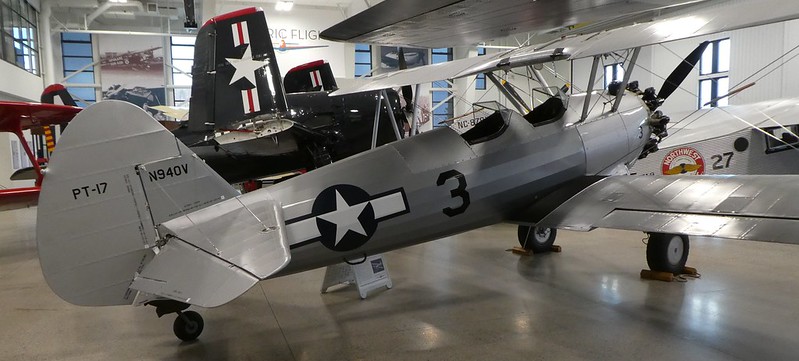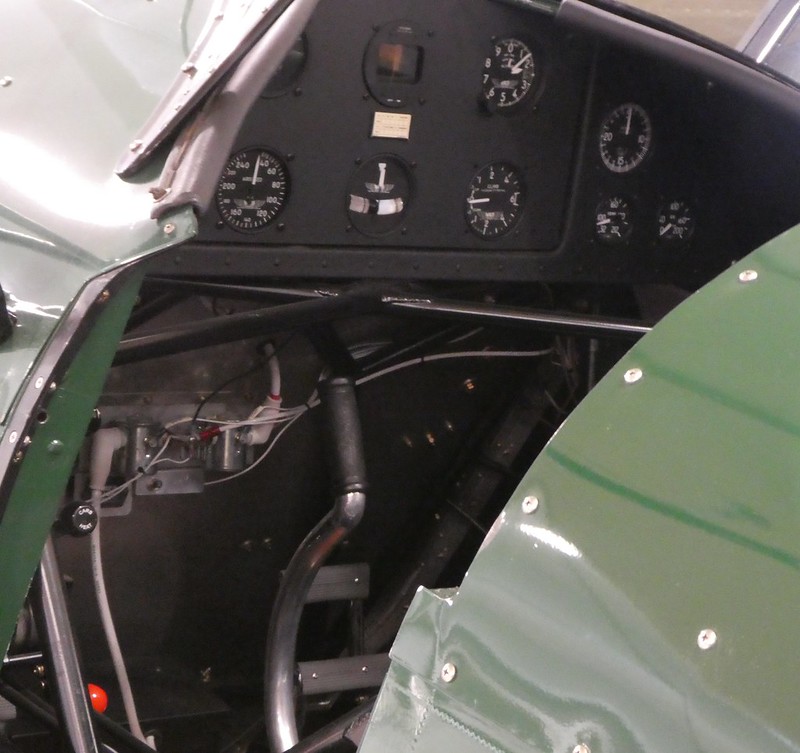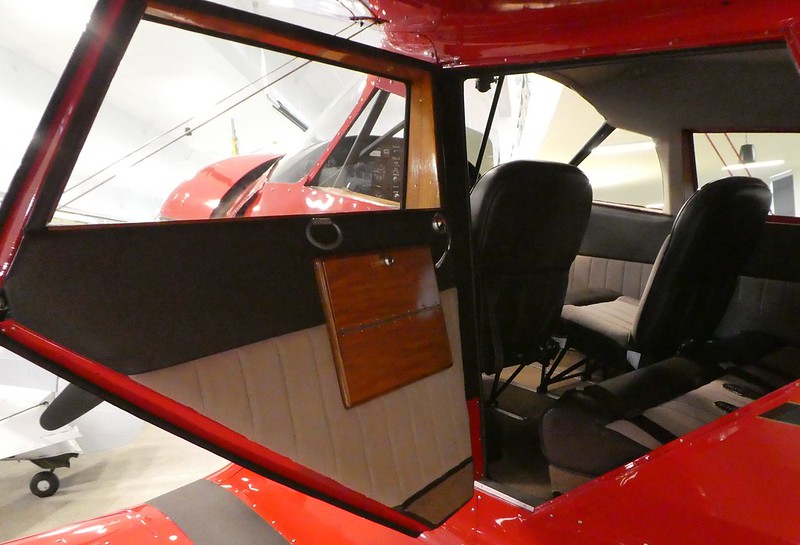Historic Flight in Spokane, Washington, has a collection of important aircraft produced between 1927 and 1957. All aircraft are fully restored and can be flown. Shown below are the biplanes which are on display.
Travel Air 4000
Aviation entrepreneurs Lloyd C. Stearman, Walter H. Beech, and Clyde Cessna found the Travel Air Manufacturing Company in 1925. During the 1920s, Travel Air produced more aircraft than any other manufacturer, but with the Great Depression, the company folded in 1930. Shown below in a 1927 Travel Air 4000.




Stearman Kaydet
This two-seater biplane was introduced by the Stearman Aircraft Division of Boeing in 1934. Between 1935 and 1944, 8,584 Kaydets were produced for both military and civilian use. According to the display:
“Despite its almost obsolete design, its simple, rugged construction made it idea for novice pilots of the U.S. Army Air Corps (PT-13/-17) and Navy (NS/N2S).”
The plane shown below began military service in 1941.




Waco UPF-7
The 1941 Waco UPF-7 shown below is one of fewer than 60 that fly today. When this plane was produced, the United States was on the brink of World War II and the Civilian Pilot Training Program purchased planes to train college students as pilots.




Beechcraft Staggerwing
The Beechcraft Model 17 was introduced in 1932 and was intended to be a large, powerful, and fast all enclosed biplane built specifically for business executives. Each airplane was hand built with luxurious cabins trimmed in leather and mohair. During its first year of production 18 were built and by the start of World War II, more than 424 had been sold. During World War II, 270 were produced for the U.S. Army Air Force (designated as UC-43) and 106 for the British Royal Air Force and Royal Navy (designated as Traveller Mk. I). This airplane has a cruising speed of 170 mph, a top speed of 180 mph, and a range of 700 miles. According to the display:
“It was popularly known as the ‘Staggerwing’ because the upper wing was staggered behind the lower wing (a negative stagger). This unique configuration gave the pilot good visibility while minimizing the tendency to stall.”
The plane shown below was built in 1944 and delivered to the Sand Point Naval Air Station for service as a reconnaissance aircraft.







More Aircraft Photo Tours
Stonehenge Air Museum: Biplanes (Photo Diary)
Evergreen Aviation: Biplanes (photo diary)
WAAAM: Waco Airplanes (Photo Diary)
WAAAM: Stearman Airplanes (Photo Diary)
Museums 101: 1930s Biplanes (Photo Diary)
Museums 101: Replica Aircraft (Photo Diary)
Museums 101: World War I Airplanes (Photo Diary)
Old Airplanes: Between the Wars (Photo Diary)


